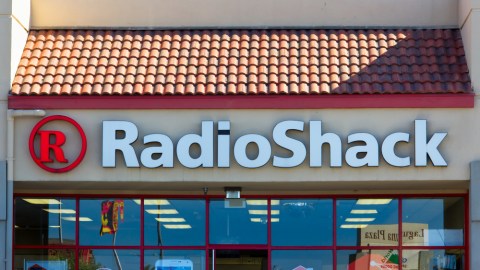What RadioShack’s Impending Death Can Teach Other Companies

What’s the Latest?
According to this CNN report, RadioShack is operating with only $62 million in the bank at the moment, meaning they don’t even have enough cash to afford closing all the stores due for shuttering this year. Recent efforts at a rebrand (embodied in this cheeky and fun Super Bowl ad) have proven to be too little too late. Company shares plunged to a paltry $0.58 at the end of trading yesterday. The future doesn’t simply look grim — it looks nonexistent.
RadioShack is hardly alone in its struggles. In May, Forbes reported massive store closures for a slew of former brick-and-mortar behemoths like Staples, Best Buy, and Sears. We can point fingers at internet retailers like Amazon for their role in the deaths of brands like Borders or Circuit City, but doing so fails to acknowledge the fact that those companies made numerous fatal mistakes that left them lying in the dust.
What’s the Big Idea?
Failure to adapt is the common chord among the many post-mortems of companies such as Borders, Circuit City, and now RadioShack. Borders ignored the telling omens of digital’s rise and instead doubled-down on CDs and DVDs. The horribly mismanaged Circuit City completely whiffed on the transition to online sales. And now RadioShack, on death’s doorstep, can watch its life flash before its eyes and wonder why it hadn’t made efforts to rebrand and reinvent itself earlier.
The challenge for retail moving forward will be finding ways to re-commodify the in-store experience. You may be familiar with the expression “showrooming,” which describes the process by which customers visit a brick-and-mortar retailer to try out products before going home and ordering them online. Despite missing out on sales, a store like Best Buy still provides value to consumers as a showroom for various electronic brands. Embracing this new role could potentially infuse new life into Best Buy’s at-risk business model.
RadioShack, on the other hand, is unlikely to get another chance to rethink its purpose. Their stores are stuck in an era when consumers weren’t tech savvy enough. Their business model still depends too highly on selling low-margin items. They’ve failed to adapt and find new ways to create value from their existing resources.
And because of that, you won’t be seeing any RadioShack ads during next year’s Super Bowl.
Keep reading about RadioShack’s dismal state of affairs at CNN
Photo credit: Ken Wolter / Shutterstock.com




